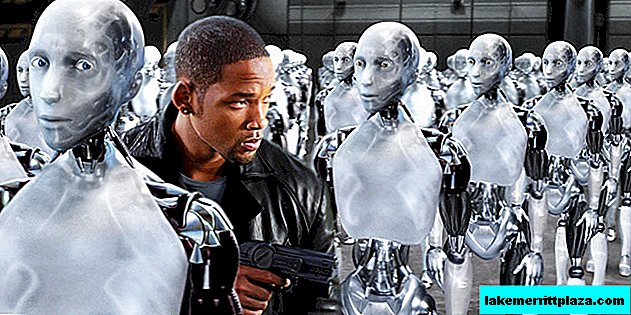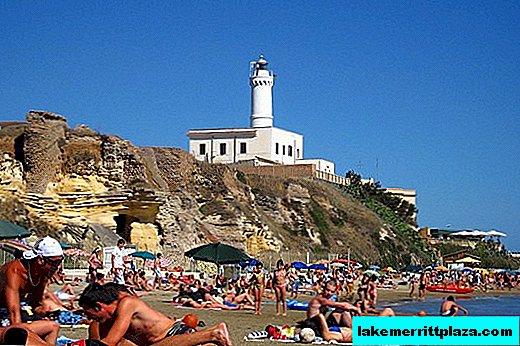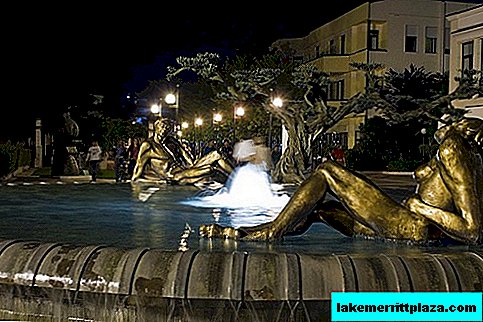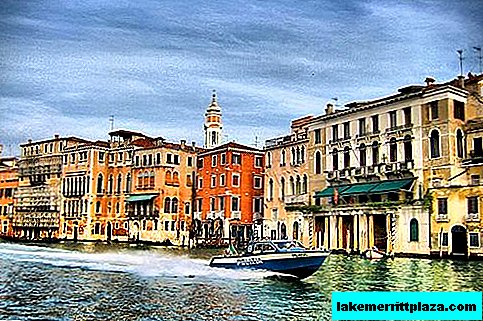The National Gallery of Modern Art (in the native language “Galleria Nazionale d'Arte Moderno", also known as GNAM) is located in the picturesque Roman Park of Villa Borghese. More than seven dozen exhibition halls are filled with five thousand exhibits.
The National Gallery of Modern Art is a logical complement to the Borghese Gallery, located in the same estate. If the Borghese Gallery exhibited the work of masters of the 15-18 centuries, then the large exposition of GNAM is painting and sculpture of the 19-20 centuries.
History of creation
The National Gallery of Modern Art began its activities at sunset of the 19th century. The idea to organize a museum in which samples of contemporary Italian art were on display has long been in the air. And so, in 1883, the Palace of Exhibitions was built by the architect Pio Pianchetti. Until the beginning of the 20th century, the painters of the new united Italy were exhibited in the Plazo delle Esposizioni building, and then the whole exhibition moved to a more picturesque place, at Villa Borghese.

The history of Villa Borghese is unique in itself and deserves special mention. The Italian cardinal Scipio Borghese, a great admirer of art and a hereditary prince, in the beginning of the 17th century set up a vast park on 80 hectares of the capital's land.
A mansion was built on the territory of the villa, turned by a cardinal into a gallery of painting and sculpture.
The descendants of Scipio Borghese, following his precepts, worked to expand the collection of objects of art. In 1903, the famous villa changed its owner. Beautiful park with all the buildings passed into the possession of the city.
In 1908, the Roman authorities initiated the construction of the palace, in which there was to be a celebration dedicated to the 50th anniversary of the unification of Italy.
By 1911, all work was completed under the strict guidance of the architect Cesare Bazzani. Thus, in the vastness of Villa Borghese another magnificent building appeared. After 4 years, the exhibition hall became the new home for the National Gallery of Modern Art.
Expositions and Exhibitions
The very name of the exhibition hall suggests that it is focused on the work of Italian contemporary masters. Initially, the walls of GNAM were decorated with works by artists representing romanticism, realism and modernism. Portraits, landscapes Boldini, Palazzi, Vincenzo Caprile, Celintano, Vittorio Corcos. Especially juicy looks the southern coast of Italy, made by the followers of the Sorrento School of Art. It is also worth paying attention to the unique direction in Italian painting - macchiayoli (from the word macchia - "spot").
Especially juicy looks the southern coast of Italy, made by the followers of the Sorrento School of Art. It is also worth paying attention to the unique direction in Italian painting - macchiayoli (from the word macchia - "spot").
The place of honor is occupied by the works of the Italian school of impressionism - paintings by Giovanni Segantini and Previati.
Fans of abstract art and unexpected color forms are encouraged to pay attention to the work of cosmopolitan artist Gino Severini. The futuristic canvases of this master scattered in museums around the world: France, Britain, Holland, Hungary. Of course, native Italy did not remain deprived, the selection of paintings by Severeni encourages gallery visitors to heated debate. Complement the exposition of futurism paintings Giacomo Balla.

Futurism was replaced by the ideas of realism, which, combined with the vivid political views of people of art, led to the formation of a new genre - realism with a large admixture of symbolism. One of the most famous representatives of Italian realism is an artist and a graphic artist. Renato Guttuso. One of his strongest works, the Crucifixion (1941), is exhibited at the National Gallery of Modern Art. By shifting the biblical plot to events taking place in Italy and Europe, the master offers his vision of the oppressed class and masters of life.
Italian sculpture
Among five thousand exhibits, a considerable place is occupied by Italian sculpture. Back in the 19th century, art historians claimed that the last genius of this genre was maestro Giovanni Lorenzo Bernini.
However, a rich collection of contemporary works refutes this point of view. The sculptor Antonio Balzico, who worked during the 19th century, left behind a number of magnificent sculptures. "Cleopatra" reclining on a stone bed impresses with its flickering grace. The master continues to glorify the beauty of the female body with the work of Polygynia.

The contrast of power and deceit is vitally depicted in the sculpture group "Hercules and the Face" by Antonio Canova. Elegance and purity shine through in the works Jimenez. And the maestro Eugenio Macgagnani embodies female images in marble, full of life and temptation ("Like the like"). Sculptures Paul Albert Bartolome gives life to fragile and vulnerable images ("Reunion").

The twentieth century brought ideas to the sculpture that significantly changed the face of the work. Reality and beauty were replaced by hypertrophic, sometimes grotesque images.

Among contemporaries, the work of a futuristic artist and sculptor is noteworthy. Umberto Boccioni. The following works are most famous for him: the canvas full of apocalypse "The city rises", ultra-realistic sculpture "Antigrazioso".
Exposure Expansion

By the middle of the 20th century, it became obvious that the gallery enjoyed the work of not only the natives of Italy, but also foreign masters. The exposition of the museum has expanded significantly due to the infusion of works by European and even state creators. Painting: Monet, Van Gogh, Picasso, Klimt, Matisse, Cezanne, Degas, Georges Braque, Jackson Pollock, Vasily Kandinsky, Joan Miró. Foreign sculptor: Henry Moore, Ivan Mestrovich, Marini, Mantsu, Jesus Rafael Soto.
How to get there
- The National Gallery of Modern Art is located in Rome at: Galleria Comunale d'Arte Moderna, Via Francesco Crispi 24 - 00187 Roma
View National Gallery in a larger map
- Official gallery website: www.galleriaartemodernaroma.it;
- Opening hours: The gallery is open to visitors from Tuesday to Sunday from 10:00 to 18:00. The last visitor starts 30 minutes before closing;
- Weekends: Monday, January 1, May 1, December 25;
- The total ticket price for an adult visitor is 7.5 euros, for a child - 6.5 euros;
You can get to the National Gallery of Modern Art by taxi, or:
- metro - line A, Flaminio station next to the Piazza del Poppolo. And then, climb the Pincho hill on foot 900 meters;
- city bus number 88, 95, 490, 495.
- By trams 2,3.19 to the Galleria Arte Moderna stop








